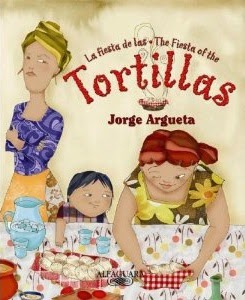Last week, I attended the UGA College of Education's Innovations in Teaching Conference and had the great fortune of sitting in on a presentation by Meg Hines of the Educational Psychology department. Dr. Hines shared information on how teachers can use Pinterest as a tool for online discussions with students, and her presentation got me thinking about using Pinterest as an educational resource -- especially for educators and parents who want to learn more about quality multicultural children's literature and pedagogy, as well as teachers who might want to use Pinterest in their middle/high school or college classrooms.
Immediately after the presentation, I logged into my Pinterest account (which has been collecting dust for about a year) and started searching for pins and boards focused on diverse children's literature. You might be thinking, "Duh Marianne, everyone knows that you can find lots of educational stuff on Pinterest." But I had no idea there were so many good recommendations and resources for kids' books, critical literacy, and multicultural education!
oooooh
I discovered lots of great boards like these:
- American Indians in Children's Literature (Debbie Reese)
- Anti-Bias Children's Books (Sharon H. Chang)
- Critical Literacy (Vivian Vasquez)
- Día de los Niños / Día de los Libros (Pat Mora)
- Diverse Children's Books (Andrea Brock)
- Latin@ Children's Book Creators (Yuyi Morales)
- Lee & Low Books
- We Need Diverse Books
Also, I decided to go crazy and start some of my own:
- Spanish-language books
- Spanish/English dual language books
- "Code-switching" books (mostly English with Spanish words incorporated)
If you're a teacher, you might even consider starting a board for your class (middle/high school or college) so that your students can pin their own book recommendations and write evaluations of the books in the captions. Here are some possible steps:
1) Get your students set up with Pinterest accounts.
2) Go to your profile page and click "Create Board."
3) Fill in the details for the board. At the bottom of the "Create a Board" window, you can add your students to the list of people who can use the board. You can even click "Keep It a Secret" if you don't want your board to be public.
4) Once you've added all of the students to the board, they can go in, upload a pin about a book, and write their evaluation in the pin's description box.
Have fun exploring! And if you find/make/have good multicultural education boards, or if you use or have used Pinterest in your classroom with students, let me know about it!
References
Hines, M. E. (2014, October). On using Pinterest to create online visual discussion forums. Presentation at the Innovations in Teaching Conference, Athens, GA.












